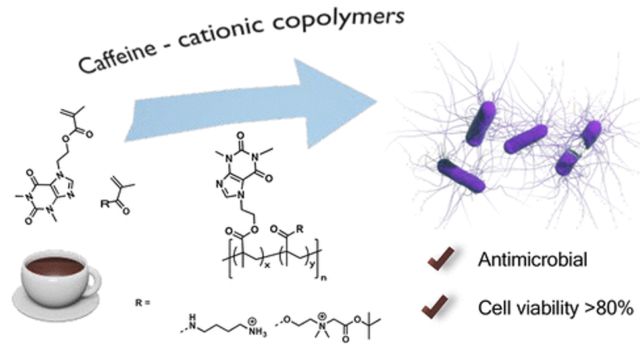Caffeine and Cationic Copolymers with Antimicrobial Properties
Peptide-mimicking macromolecules with hydrophobic and cationic side chains that can kill bacteria by destabilizing their membranes.

PIs and Institution
Pedro Salas-Ambrosio, Shelby Vexler, Irene Chen, and Heather Maynard (UCLA)
Achievement
In this study, polymer chemistry was used to create peptide-mimicking macromolecules with hydrophobic and cationic side chains that can kill bacteria by destabilizing their membranes. The macromolecules were prepared by radical copolymerization of caffeine methacrylate as the hydrophobic monomer and various cationic- or zwitterionic-methacrylate monomers. Copolymers bearing carboxybetaine as the cation exhibited antibacterial activity against both Gram-positive (S. aureus) and Gram-negative bacteria (E. coli), including methicillin-resistant clinical isolates. The synthesized copolymers also demonstrated good biocompatibility with mouse embryonic fibroblast cells and hemocompatibility with erythrocytes.
Importance of the Achievement
Antimicrobial resistance is a significant global health concern, and the study's findings offer a novel strategy for combating drug-resistant microbes. The use of caffeine and carboxybetaine as hydrophobic and cationic groups in copolymers could help prepare macromolecules with broad-spectrum antibacterial activity and low cytotoxic effects. These copolymers have potential applications in various fields, including biomedical devices and coatings, and can potentially address the urgent need for effective antimicrobial agents.
Unique Features of BioPACIFIC MIP that Enabled this Achievement
BioPACIFIC MIP provided financial support for materials and researchers through the Fellows program. This initiative emerged as a result of the dynamic interactions and collaboration between members of diverse research groups within one of the BioPACIFIC MIP SETs.